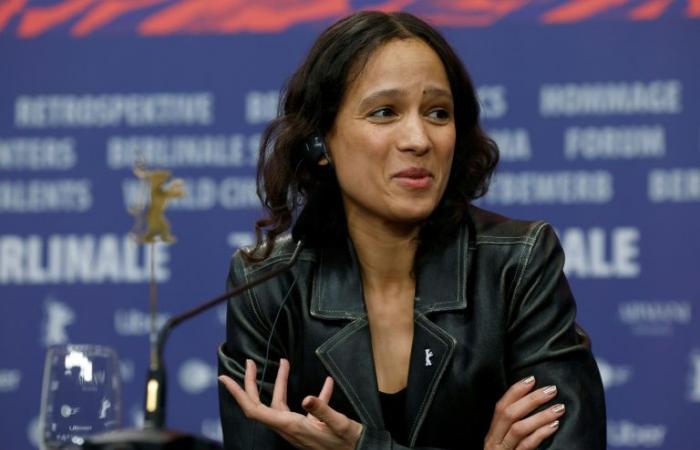King Ghézo is no longer just a number in the inventory of a Parisian museum: he comes to life in front of the camera of Mati Diop who recounts the return to Benin of this statue and other works looted by France during the colonial era.
In the documentary “Dahomey”, which won the Golden Bear in February in Berlin and is released in theaters in France on Wednesday, the 42-year-old Franco-Senegalese director addresses this movement initiated over the last five years by former powers such as France, Germany and Belgium.
To tell the story of 26 works looted in 1892 from the kingdom of Dahomey, in the south-central part of present-day Benin, which was then made up of several kingdoms, Mati Diop uses the anthropomorphic statue of King Ghézo, who reigned from 1818 to 1858, as a voiceover.
In one of the most widespread languages of Benin, Fon, he complains that he no longer has a name, only a number, “26”, in the reserves of the Quai Branly museum.
He describes his uprooting from his land, his life in exile, then his recent repatriation to a museum in Cotonou, the capital of Benin.
For this narration, “it was particularly important that the statue speak in a language of Benin and not French, the language of the colonizer,” emphasizes this “Afro-descendant”, as she describes herself, who was born and raised in Paris.
– “Stuff” –
French President Emmanuel Macron and Beninese President Patrice Talon, who initiated this restitution on November 10, 2021, do not appear in the film.
For Mati Diop (Grand Prix at Cannes in 2019 for “Atlantiques”), it was not about celebrating this political initiative.
The daughter of the musician Wasis Diop wanted to emphasize that the return of these 26 treasures was very little “compared to the 7,000 works still captive at the Quai Branly museum.”
The second part of the film focuses on their reception in a country transformed since their departure and which had partially forgotten them.
In a debate between students, one explains that he grew up with American cartoons “Tom and Jerry” and had no knowledge of this “stuff”.
“Dahomey pushes us to question the whole history transmitted from primary, secondary and university education,” notes Gildas Adannou, a 29-year-old student at the University of Abomey Calavi and assistant director, in an interview conducted by AFP during the Berlinale.
Mati Diop would like his film to be “seen in as many African countries as possible”. “It must be shown to those most concerned”, the niece of Senegalese Djibril Diop Mambéty, director of “Touki Bouki” (winner of the international critics’ prize at Cannes in 1973), told AFP.
“I want it to be shown in universities, in schools. There is real work to be done to pass it on.”
clp/fbe/pel/sla






